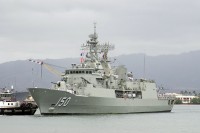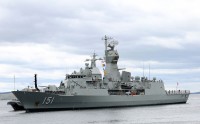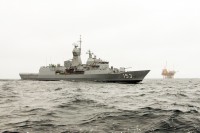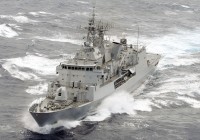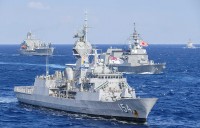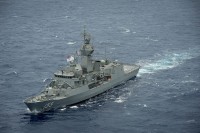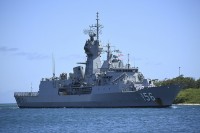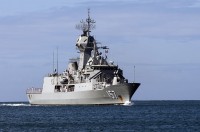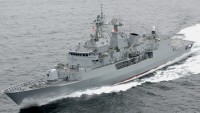Anzac-class frigate (MEKO 200ANZ)
Basic information
Ship measurements
Machine
- 1 * General Electric LM2500-30 gas turbine, 30,172 hp (22,499 kW)
- 2 * MTU 12V1163 TB83 diesel engines, 8,840 hp (6,590 kW) each
- 2 * controllable-pitch propellers
Personnel
Combat assets
- Raytheon SPS-49(V)8 ANZ aerial search and long-range surveillance radar
- Saab 9LV 453 Ceros 200 Target Indication Radar for air and surface search radar
- Kelvin Hughes SharpEyeTM I-Bandl radar
- Saab 9LV 453 unit for fire control radar
- ThomsonSintra Spherion B hull-mounted bow sonar
- Petrel Mine and Obstacle Avoidance Sonar system
- Fitted for but not with towed-array sonar
- Cossor AIMS Mark XII identification-friend-or-foe system
- Mark 36 SRBOC launchersSLQ-25A towed torpedo decoy
- Nulka decoy launchers
- Rascal Thorn modified Sceptre-A electronic support measures
- Telefunken PST-1720 Telegon 10 radar intercept unit
- Individual ship modifications
Fitted:
- 1 * 5-inch 54 calibre Mark 45 Mod 4 dual purpose gun
- 1 * 8-cell Mark 41 Mod 5 vertical launch system, firing RIM-7 Sea Sparrow
- 2 * 12.7-millimetre (0.50 in) machine guns
- 2 * Mark 32 3-tube torpedo launchers, firing Mark 46 torpedoes
- 1 * Vulcan Phalanx CIWS (RNZN only)
- Individual ship modifications
Fitted for but not with:
- 1 * close-in weapons system (RAN only)
- 2 * 4-canister Harpoon missile launchers
- 2nd Mark 41 VLS
1 * helicopter: Sikorsky MH-60R Seahawk (RAN), Kaman SH-2G Super Seasprite (RNZN)
The Anzac class (also identified as the ANZAC class and the MEKO 200 ANZ type) is a ship class of ten frigates; eight operated by the Royal Australian Navy (RAN) and two operated by the Royal New Zealand Navy (RNZN). During the 1980s, the RAN began plans to replace the River-class destroyer escorts with a mid-capability patrol frigate, and settled on the idea of modifying a proven foreign design for Australian conditions. Around the same time, the RNZN was seeking to replace their Leander-class frigates while maintaining blue-water capabilities. A souring of relations between New Zealand and the United States of America in relation to New Zealand's nuclear-free zone and the ANZUS security treaty prompted New Zealand to seek improved ties with other nations, particularly Australia. As both nations were seeking warships of similar capabilities, the decision was made in 1987 to collaborate on their acquisition. The project name (and later, the class name) is taken from the Australian and New Zealand Army Corps of the First World War.
Twelve ship designs were tendered in 1986. By 1989, the project had selected a proposal by Germany's Blohm + Voss, based on their MEKO 200 design, to be built in Australia by AMECON at Williamstown, Victoria. The modular design of the frigates allowed sections to be constructed at Whangarei, New Zealand and Newcastle, New South Wales in addition to Williamstown. The RAN ordered eight ships, while the RNZN ordered two and had the option to add two more. The frigate acquisition was controversial and widely opposed in New Zealand, and as a result, the additional ships were not ordered.
In 1992, work started on the frigates; 3,600-tonne (3,500-long-ton) ships capable of a 27-knot (50 km/h; 31 mph) top speed, and a range of 6,000 nautical miles (11,000 km; 6,900 mi) at 18 knots (33 km/h; 21 mph). The armament initially consisted of a single 5-inch gun and a point-defence missile system, supported by a missile-armed helicopter. In addition, the ships were fitted for but not with a torpedo system, anti-ship missiles, and a close-in weapons system. The last ship of the class entered service in 2006; by this point, the RAN and RNZN had embarked on separate projects to improve the frigates' capabilities by fitting the additional weapons, along with updates to other systems and equipment.
Since entering service, Anzac-class frigates have made multiple deployments outside local waters, including involvement in the INTERFET multi-national deployment to East Timor, and multiple operational periods in the Persian Gulf. As of 2014, all ten ships are in service. The RAN intends to start replacing theirs in 2024, while the RNZN ships will remain active until around 2030.
Ships10
- Comments
 en
en ru
ru uk
uk
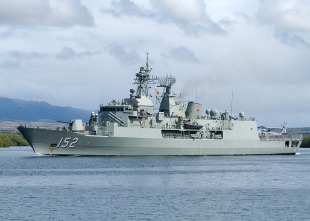
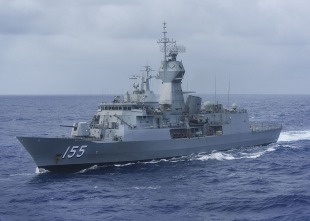
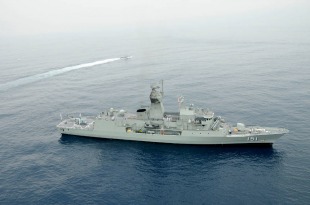
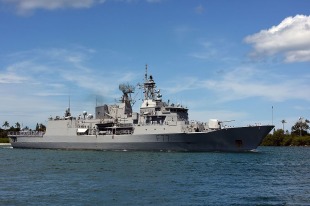
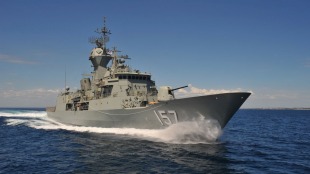

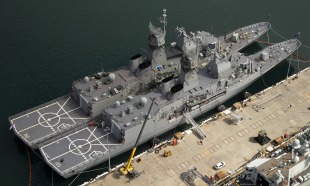
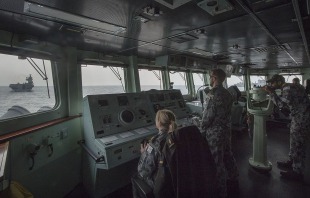
 Royal New Zealand Navy
Royal New Zealand Navy Royal Australian Navy
Royal Australian Navy